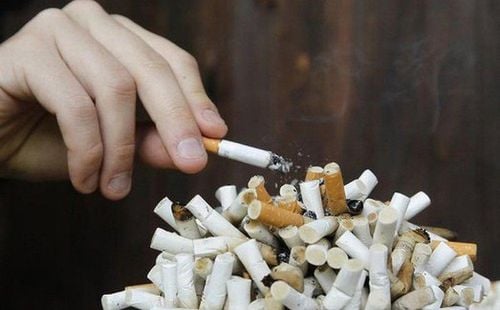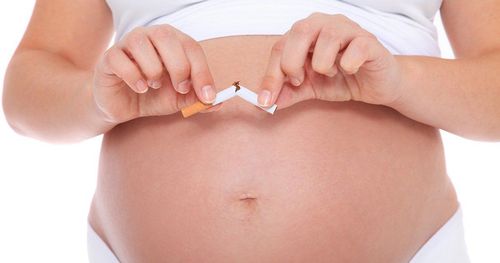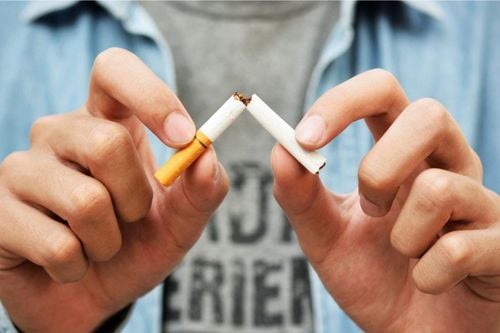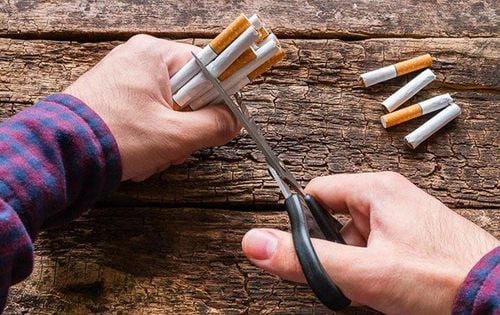This is an automatically translated article.
The article is written by Doctor Phan Dinh Thuy Tien - General Internal Medicine, Department of Examination & Internal Medicine - Vinmec Nha Trang International General Hospital.
Tobacco is a strong trigger for asthma symptoms, causing irritation to the lining of the airways. Secondhand smoke is also harmful. This is true for adults, and especially true for children.
1. What is the link between smoking and asthma?
Smoke from cigars, cigarettes and pipes harms your body in many ways, but it is especially harmful to the respiratory system. The airways in people with asthma are very sensitive and can react to many things, or "triggers." Exposure to these triggers often produces asthma symptoms.Tobacco smoke is a powerful asthma trigger. A healthy respiratory system shows the airways and lungs. The bronchial tubes are the passageways that carry air into the lungs.
2. What if a smoker has asthma?
When a person breathes in cigarette smoke, irritating substances are deposited in the moist lining of the respiratory tract and can trigger asthma attacks. Usually, the lungs of people with asthma who smoke are in poor control of their asthma. These people often have persistent asthma symptoms.
Tobacco smoke also damages the tiny tufts of hairs in the airways called "cilia". Normally, the cilia sweep dust and mucus out of the airways. Tobacco smoke damages the cilia causing them to lose their ability to function. Cigarette smoke also causes the lungs to secrete more mucus than usual. As a result, when the cilia are inactive, mucus and other irritants build up in the airways.
Tobacco smoke also contains many carcinogens ("carcinogens", such as tar). These substances deposit in the lungs and can cause lung diseases such as lung cancer and emphysema.

Khói thuốc lá cũng chứa nhiều chất gây ung thư
3. What are the effects of secondhand smoke asthma?
Secondhand smoke is a combination of smoke from a burning cigarette and smoke exhaled by a smoker. Inhaling secondhand smoke, (also called secondhand smoke or environmental tobacco smoke), from someone else's smoking can be even more harmful than smoking yourself. The smoke burned at the end of a cigar or cigarette contains more harmful substances (tar, carbon monoxide, nicotine, and others) than the smoke inhaled by smokers.
Adults and children living with smokers are more likely to develop respiratory diseases. Children are especially at risk because their lungs are smaller and still developing. Secondhand smoke exposure can lead to decreased lung function and symptoms of airway inflammation such as coughing, wheezing, and increased mucus production, especially in children.
Children with asthma are particularly sensitive to secondhand smoke. They are more likely to develop asthma symptoms when exposed to secondhand smoke. They are also more likely to have lung and sinus infections. These infections can make asthma symptoms worse and harder to control.
4. How to reduce your exposure to smoke
If you smoke, quit for yourself and your children. If your spouse or other family member smokes, help them understand the dangers of smoking and encourage them to quit. Quitting smoking is not always easy. There are many programs and methods to help you quit smoking. Ask your doctor to help you find the method that works best for you.
No smoking allowed in your home or car. Do not allow your child's caregivers to smoke. Avoid public places where smoking is allowed.
5. Can smoking harm my unborn baby?
Smoking is harmful to both mother and fetus. Along with directly damaging the mother's lungs, nicotine, the addictive substance in tobacco products, and other substances is passed through the mother's blood and directly to the baby. Children of mothers who smoke during pregnancy are 10 times more likely to develop respiratory problems and have a 10-fold increased risk of asthma. Smoking during pregnancy is also associated with low birth weight, premature birth, and sudden infant death syndrome.
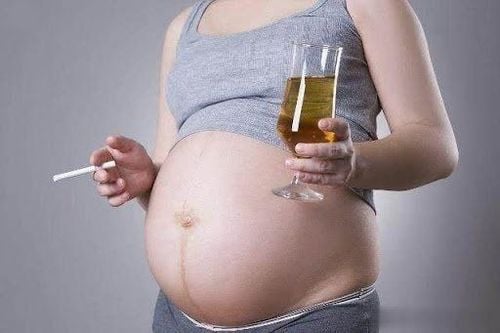
Hút thuốc có hại cho cả mẹ và thai nhi
6. How can I quit smoking?
Discuss quitting with your doctor. Decide when you will quit smoking and prepare for that day. Remove all cigarettes, lighters and ashtrays. Avoid all situations that can trigger your urge to smoke. For example, if you always smoke after a meal, get up and go for a walk or immediately start clearing the table, etc. Whenever you want to smoke, take a deep breath and hold it for 5 to 10 seconds. Do not allow others to smoke in your home. Hold on to finger foods, like carrot sticks or chewing gum, when you want to smoke. Be active in not smoking. Go for a walk or read a book. Join a support group or smoking cessation class. Talk to your doctor about nicotine replacement aids (gum, patch) that can be helpful when you're trying to quit. In addition to smoking cessation, each individual should actively combine lung cancer screening - this is the most effective measure for you to detect and promptly treat lung cancer, protect your health and life. Currently, Vinmec international general hospitals have a Lung Cancer Screening Package with many outstanding advantages such as: A team of highly qualified and experienced doctors; Having a full range of specialized facilities to diagnose the disease and stage it before treatment: Endoscopy, CT scan, PET-CT scan, MRI, histopathological diagnosis, genetic - cytological testing... There are full range of main cancer treatment methods: surgery, radiation therapy, chemotherapy, stem cell transplant....
Please dial HOTLINE for more information or register for an appointment HERE. Download MyVinmec app to make appointments faster and to manage your bookings easily.
Article referenced source: clevelandclinic.org



